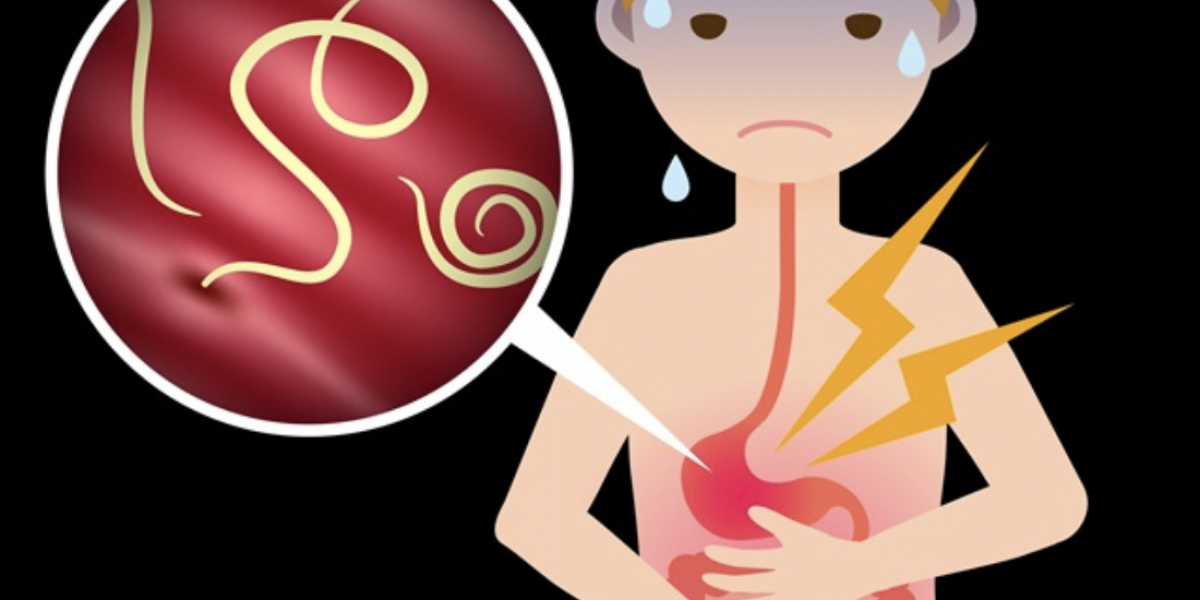Parasitic worm infections medically often classified under the term Helminthiasis (infections by helminths or parasitic worms) can present with a wide range of symptoms. Many depend on the species of worm, the host’s immune status, the worm load (how many of them), and how long the infection has been present. Below is a comprehensive overview of the symptoms of parasitic‐worm infections, with some notes on treatment (including mention of the medication Nitazoxanide 500 mg and its use/distributors) to give you context.
Important: This is for informational purposes only and is not a substitute for medical diagnosis or treatment.
What are parasitic worm (helminth) infections?
Worms in this context refer to multicellular parasites (helminths) such as roundworms (nematodes), flatworms (trematodes), and tapeworms (cestodes) that can infect humans. These worms often live in the intestines, but some may migrate to other tissues (skin, lungs, liver, brain) and cause systemic effects. The global burden is large: the World Health Organization (WHO) notes that soil-transmitted helminths affect billions of people worldwide, especially in areas with poor sanitation.
People may acquire worm infections by ingesting eggs or larvae (via contaminated water/food/soil), by skin penetration (for some species), or by eating undercooked meat or fish (for some tapeworms) etc.
Because of this heterogeneity in species and life‐cycles, the symptom patterns are variable from completely asymptomatic to life-threatening in heavy infections.
Common symptoms of intestinal worm infections
These tend to be the more frequent signs when worms are present in the gastrointestinal tract. They are not specific to worms (i.e., could be many other causes) but in the right context they raise suspicion.
Abdominal pain and discomfort: Many worm infections cause cramp-like pain, bloating or diffuse abdominal discomfort.
Diarrhea (sometimes with mucus or blood): Loose stools, often persistent, may accompany infections, especially if the intestinal lining is injured.
Nausea, vomiting: These are somewhat less specific but commonly seen with gastrointestinal irritation.
Gas, bloating, flatulence: Parasites can interfere with digestion and produce increased gas.
Loss of appetite: Especially with heavier worm burdens, appetite suppression may occur.
Unexplained weight loss: When the infection persists, the worm(s) may compete for nutrients, leading to weight loss.
Fatigue, general malaise: The host may feel tired, weak or rundown the body is coping with the parasite and possible nutrient/micronutrient loss.
Anal or genital itching: In particular with certain worms (pinworms) the night-time itching around the anus is classic.
Visible worms or segments in stools: Some tapeworms shed proglottids (segments) that may be seen in the stool; or roundworms might occasionally be visible.
Additional, less obvious symptoms depending on species & migration
Because some worms have life cycles that involve migration through tissues, or are located outside the gut, there are more systemic or “odd” signs you may see.
Skin rash or itching: For example, hookworm larvae might penetrate the skin, leaving an itchy “ground itch” or serpiginous rash.
Respiratory symptoms: Some worms migrate through the lungs (e.g., during larval migration), leading to cough, wheeze, shortness of breath or throat irritation.
Anaemia or iron‐deficiency: Worms such as hookworms feed on blood; chronic infection can lead to iron-deficiency anaemia, particularly in children and women of reproductive age.
Malnutrition, growth retardation (in children): Especially heavy worm burdens in childhood can impair growth, physical development and cognition.
Gut obstruction or mechanical complications: Very heavy loads of worms (e.g., large roundworm burdens) can lead to intestinal obstruction, volvulus, or perforation.
Neurological or systemic signs (less common): Some worms may invade other tissues e.g., certain tapeworm larval forms in the brain can cause seizures; severe dissemination may cause edema, shock, etc.
Important caveats
Many people with worm infections are asymptomatic or have only very mild symptoms, especially when worm burden is low.
The type of worm matters greatly: the species (roundworm, hookworm, whipworm, tapeworm, fluke) influences symptoms.
The geography / exposure / sanitation / immune status matter: worms are more common and often heavier burden in tropical/sub-tropical and under-sanitized settings.
Some symptoms are indirect: e.g., anaemia, growth retardation, nutrient malabsorption vs. direct gut irritation. So if you present with vague symptoms (fatigue, weight loss, anaemia) you may not immediately think of worms, but they could be a cause.
Relation to the medication Nitazoxanide (500 mg) and its relevance
While most standard treatments for intestinal helminths in many settings are different (e.g., Albendazole, Mebendazole, Praziquantel depending on worm type), it is worth noting the medication nitazoxanide in this context:
Nitazoxanide (often in a 500 mg tablet form) is approved for treating diarrhoea caused by certain protozoal parasites (e.g., Giardiasis and Cryptosporidiosis) in immunocompetent people.
Research shows it also has broad spectrum activity in vitro and in some trials for helminths (worms) e.g., it has been shown to act against nematodes and cestodes in controlled studies.
Thus, while nitazoxanide is not the first‐line for many classic helminth infections everywhere, it may be cited in some settings for intestinal parasitic worm infestations and protozoal worm‐like infections.
From a practical & distributor / pharmaceutical supply viewpoint, in many countries the 500 mg tablet formulation is the standard adult dose form. If someone is looking for “nitazoxanide 500 mg distributors” (i.e., companies or pharma firms distributing that dosage form), they will need to consult local regulatory lists, importers, or national pharmaceutical registries, because drug‐distribution differs by country/regulation.
Side effects of nitazoxanide are generally mild (e.g., stomach pain, headache, urine colour changes) and the drug is well tolerated.
Important caution: Only a qualified healthcare provider should decide and prescribe anthelmintic/antiparasitic therapy. Use of nitazoxanide for helminth infections would depend on local guidelines, diagnostics, worm type, and regulatory approval.
Putting it together: What to watch for
If you suspect a parasitic worm infection (based on exposure, symptoms, risk factors), good “red‐flags” include:
Persistent gastrointestinal symptoms: e.g., abdominal pain, chronic diarrhea, unexplained weight loss.
Specific local signs: e.g., anal itching at night (pinworms), itching rash where larvae may have penetrated (hookworms).
Systemic signs: anaemia (especially iron‐deficiency), nutrient deficiency signs (in children, growth retardation).
History of exposure: contaminated water/food, walking barefoot in endemic areas, travel to tropical regions, poor sanitation.
Lab clues: e.g., elevated eosinophils (a type of white blood cell often elevated in tissue‐invading worms) may support suspicion.
Visual findings: occasionally actual worms/segments in stool, or visible rash/skin involvement in migrating forms.
If you have any of these features, it’s appropriate to consult a healthcare provider who may order stool examination (ova & parasites), blood work, imaging (in some cases) and then determine appropriate antiworm/antiparasitic therapy. Early treatment helps avoid complications such as severe malnutrition, intestinal blockages or systemic migration.
Summary
In summary: parasitic worm infections can range from silent to severe. The hallmark symptoms tend to involve the gut (pain, diarrhea, bloating), but the effects can go beyond the intestines, affecting nutrition, skin, lungs, even the brain in extreme cases. The drug nitazoxanide (500 mg tablet) is one of the antiparasitic/anthelmintic medications with a broad‐spectrum potential and is approved for certain protozoal infections, with some evidence for helminth use; those looking for “nitazoxanide 500 mg distributors” should engage with local pharmaceutical regulatory sources. If you suspect a worm infection, seek medical evaluation rather than self-treating.
If you like, I can check which companies distribute nitazoxanide 500 mg in India/Asia, what the procurement/registration status is in India (Surat, Gujarat area) and also provide which worm types specifically nitazoxanide is indicated for, with dosing info. Would you like me to look that up?














